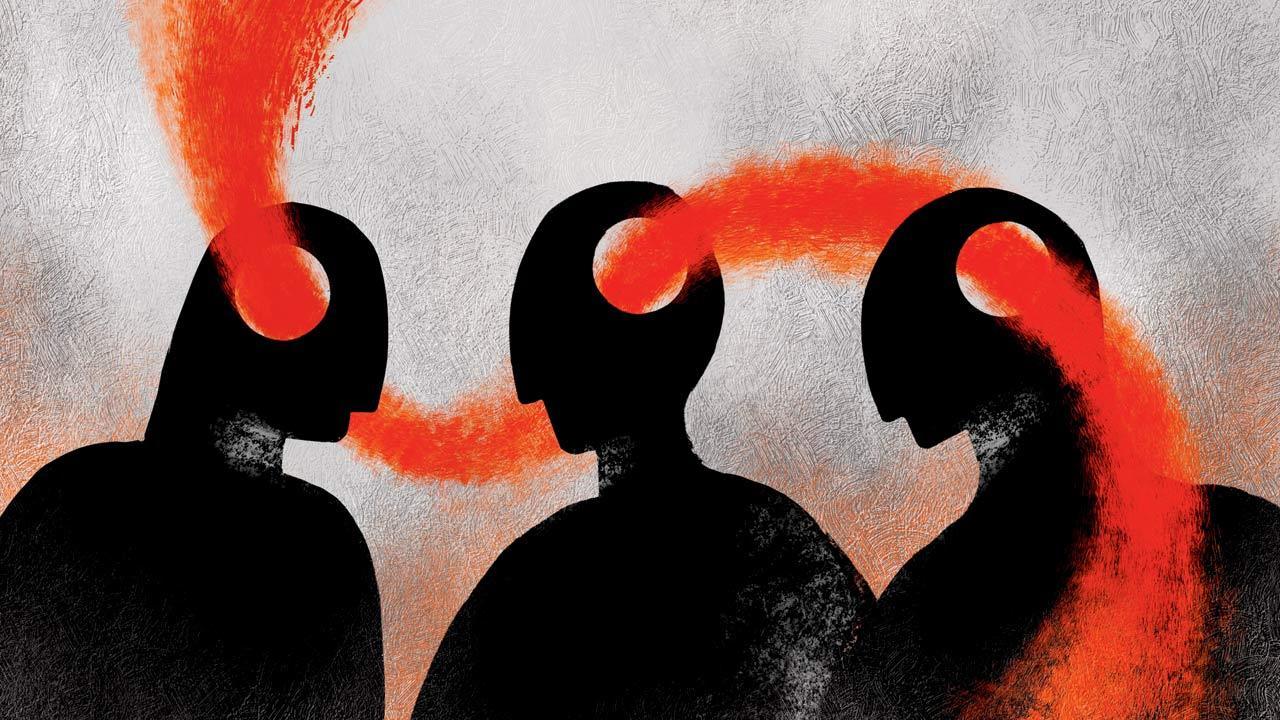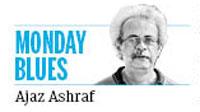Political Science textbook revisions betray a desire to fabricate a new past for the Indian teenager and notch victories over the memories of those who have lived through tumultuous times

‘Who controls the past controls the future: who controls the present controls the past’ — George Orwell, English novelist and essayist
 In George Orwell’s dystopian novel Nineteen Eighty-Four, Winston Smith, the protagonist, muses: “‘Who controls the past,’ ran the Party slogan, ‘controls the future: who controls the present controls the past.’” Presiding over Orwell’s imagined totalitarian superstate of Oceania, the Party seeks to justify its policies by altering records of the past. In Oceania’s present, its past is constantly recreated. The process was simple, for, as Smith notes, “all that was needed was an unending series of victories over your own memory.”
In George Orwell’s dystopian novel Nineteen Eighty-Four, Winston Smith, the protagonist, muses: “‘Who controls the past,’ ran the Party slogan, ‘controls the future: who controls the present controls the past.’” Presiding over Orwell’s imagined totalitarian superstate of Oceania, the Party seeks to justify its policies by altering records of the past. In Oceania’s present, its past is constantly recreated. The process was simple, for, as Smith notes, “all that was needed was an unending series of victories over your own memory.”
ADVERTISEMENT
India is no Orwell’s Oceania, yet as you read Recent Developments in Indian Politics, a revised chapter in the NCERT Standard XII Political Science textbook, and compare it with the one previously taught (hereinafter, original chapter), you will feel the Bharatiya Janata Party wants to triumph “over your own memory” of the 1992 demolition of the Babri Masjid.
The NCERT, working under the Union Education Ministry, has achieved this for the BJP by deleting passages from the original chapter, rewriting sentences and adding new text to it. In doing so, the BJP wishes to create a new past for those who are 17 or 18 years old, a past remarkably different to what you lived. Your children, in years to come, will say your memory is a lie.
Yet, ironically, the BJP’s attempt to invent a new past betrays its subconscious desire to neutralise the moral condemnation inherent in its role in the demolition of a place of worship. This the revised chapter does by depriving the Babri Masjid of its sacredness, choosing to call it a “three-dome structure.” The demolition of a structure disconnected with the notion of the sacred does not sound as morally reprehensible as the act of destroying a mosque would.
The original chapter said, “Some Hindus believe that it [Babri Masjid] was built after demolishing a temple for Lord Rama in what is believed to be his birthplace.” But the belief of “some Hindu” turns into a historical fact in the revised chapter, which says a “three-dome structure was built at the site of Shri Ram’s birth place in 1528, but the structure had visible display of Hindu symbols and relics in its interior as well as its exterior portion.”
The use of the word “but” in the sentence is perplexing: perhaps the person who wrote the sentence was aware that even the Supreme Court, in its 2019 judgment on the Ayodhya dispute, said there is no proof that the Babri Masjid was built after demolishing a temple. The reference to Hindu relics and symbols, in effect, projects the three-dome structure as a usurpation. Might not the Standard XII student feel it is morally justified for such a structure to be pounded to rubble?
The revised chapter does not dwell upon the violence the Ram Janmabhoomi movement spawned. It merely says that “tensions heightened between both communities over ownership rights” to the three-dome structure, resulting in “numerous disputes and legal conflicts.” But these disputes were bloody, which the original chapter puts on record thus: the BJP along with the “RSS [Rashtriya Swayamsevak Sangh] and the Vishwa Hindu Parishad” convened a series of mobilisation programmes, leading to “surcharged atmosphere and many instances of communal violence.”
The revised chapter snaps the link between BJP’s politics and violence. It shies away from saying that Hindutva’s ascendancy was preceded by a bloodshed surpassed only by the Partition riots. By contrast, the original chapter mentioned the 1992-93 riots in Bombay as an example of Hindu-Muslim clashes erupting following the demolition of the Babri Masjid. The effacing of such details from the revised chapter makes the Ram Janmabhoomi movement appear democratic and non-violent.
It is Orwellian of the NCERT to delete from the original chapter a passage on the 2002 Gujarat riots. That passage said,
“As in the case of anti-Sikh riots of 1984, Gujarat riots show that government machinery also becomes susceptible to sectarian passions.” These events, the chapter noted, should “alert us to the dangers involved in using religious sentiments for political purposes. This poses a threat to democratic politics.”
NCERT director D P Saklani said they took out the portion on riots because they “want to create positive citizens, not violent and depressed citizens.” What would depress them is not the truth recounted in the textbook, but the BJP’s propensity to mix religion with politics, witnessed during the recent Lok Sabha elections. By deleting references to the 1984 and 2002 riots, the NCERT is crafting for students a moral universe where the harnessing of religion for political mobilisation would seem benign—and, therefore, acceptable.
For all its faults, the Congress did allow the NCERT, during the first tenure of Manmohan Singh as Prime Minister, to include in the political science textbook a critique of Indira Gandhi’s decision to impose the Emergency. The inclusion suggested the Congress belatedly realised its mistake in suspending democracy.
The revised chapter, on the other hands, conveys the impression that instead of changing its politics, the BJP will seek to create a new past for the Indian teenager—and notch endless victories over your memories as well. Those who controls the past think they can control the future, but are defeated by the persistence of memories.
The writer is a senior journalist and author of Bhima Koregaon: Challenging Caste
Send your feedback to mailbag@mid-day.com
The views expressed in this column are the individual’s and don’t represent those of the paper
 Subscribe today by clicking the link and stay updated with the latest news!" Click here!
Subscribe today by clicking the link and stay updated with the latest news!" Click here!







